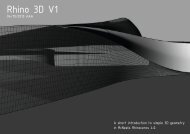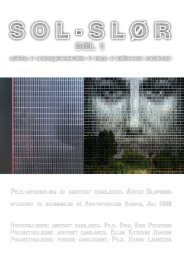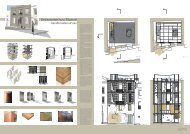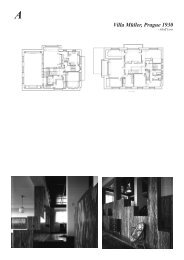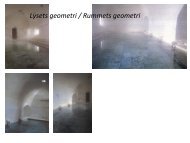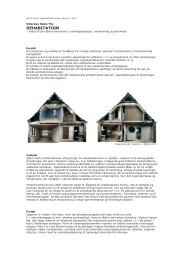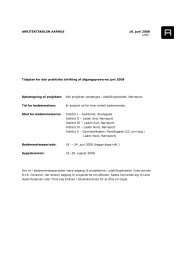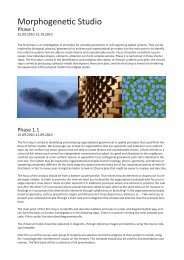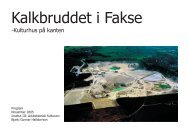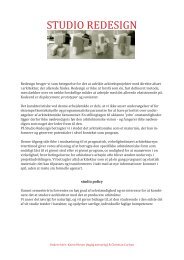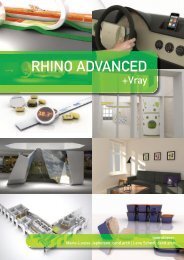-Tactics and Concepts for Highly Mobile People
-Tactics and Concepts for Highly Mobile People
-Tactics and Concepts for Highly Mobile People
You also want an ePaper? Increase the reach of your titles
YUMPU automatically turns print PDFs into web optimized ePapers that Google loves.
Redström (Redström, 2006) argue that there is a problem in moving from object centered<br />
design to user centered design, as users are not educated in designing future objects but<br />
are experts about their own domain. Redström argues that designs can be made as means<br />
<strong>for</strong> asking questions rather than being well defined answers from the start (Redström,<br />
2006). In this process I have kept the role of the designer on my shoulders, but building<br />
on knowledge about extreme mobility <strong>and</strong> bouncing the artifacts quickly back to people,<br />
be<strong>for</strong>e the design is a closed <strong>and</strong> finished product.<br />
The field of design ethnography is growing <strong>and</strong> there are many ways to combine the two<br />
professions of design <strong>and</strong> ethnography (Buur & Sitorus, 2007; Crabtree, Hemmings, &<br />
Rodden, 2002; Halse, 2008). Moving from underst<strong>and</strong>ing the context be<strong>for</strong>e designing<br />
(Crabtree, Hemmings, & Rodden, 2002) to intervening <strong>and</strong> underst<strong>and</strong>ing mutually<br />
(Halse, 2008). This dissertation follows the more traditionally approach of separating the<br />
two in order to identify patterns <strong>for</strong> analysis through typification (Crabtree, Hemmings, &<br />
Rodden, 2002). It is then developed into a concrete tool <strong>for</strong> design that is looking <strong>for</strong>ward<br />
with concerns of the future situation.<br />
The ethnographic studies <strong>for</strong>m an important basis <strong>for</strong> this dissertation work <strong>and</strong> working<br />
together with Ida Winther was a significant opportunity. Her approach about homing as<br />
an activity that is taking place in many locations is highly relevant in this project as it<br />
addresses the paradox of home <strong>and</strong> mobility. So having her look at the practices of<br />
extremely mobile people became a key element in the research group. She reported back<br />
about her observations <strong>and</strong> we went through transcriptions <strong>and</strong> video recordings in<br />
order to identify some patterns <strong>and</strong> tendencies. The findings led to the paper that I<br />
presented at <strong>Mobile</strong> HCI in 2010:<br />
Published as: Petersen, M. G., Lynggaard, A. B., Winther, I. W. & Krogh, P. (2010)<br />
<strong>Tactics</strong> <strong>for</strong> Homing in <strong>Mobile</strong> Life – A Fieldwalk Study of Extremely <strong>Mobile</strong> <strong>People</strong>,<br />
<strong>Mobile</strong>HCI 2010, ACM digital Library<br />
The tactics have then been further developed since we wrote the paper, as I have applied<br />
it in the design process <strong>and</strong> learned more about home theories that feed the list of home<br />
characteristics developed in this study.<br />
58



